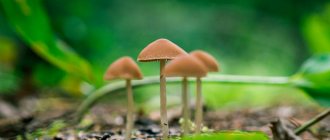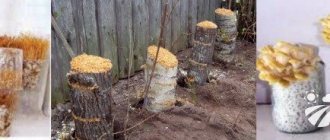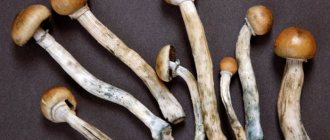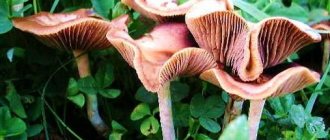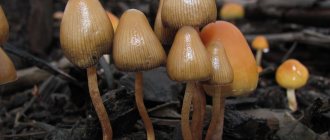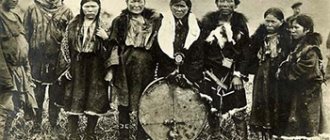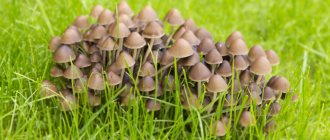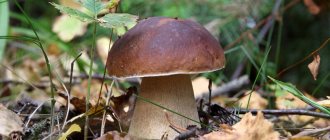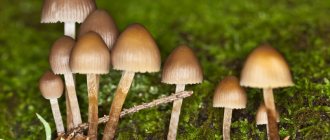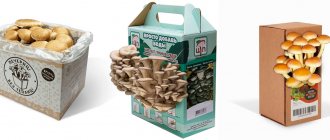Not everyone has the opportunity to go into the forest to pick mushrooms. Usually this valuable product is bought in a store. Mushrooms are cultivated in large quantities in greenhouses, creating a favorable microclimate for them.
Farmers suggest growing them at home. To do this, purchase kits with soil and mycelium. Experienced mushroom pickers use spores of forest mushrooms. How to get a mushroom bed at home? What conditions need to be created?
Growing Magic Mushrooms
Growing P. cubensis at home indoors is not difficult. Most varieties will produce good yields under almost any growing method, as long as it is followed closely (yes, new methods can be developed, but beginners who try to increase yields along the way often end up without them). Perhaps the simplest and most reliable version is PF Tek, named after its inventor, a man nicknamed Psilocybe Fanaticus, or PF for short. Here's a quick rundown: Using distilled water and a spore print with a sterile syringe, prepare a spore suspension. Fill a wide-mouth glass jar with suitable mushroom food, add the spores and wait. Once the substrate in the jar is completely colonized with mushrooms, "birth" it (that is, remove the colonized substrate from the jar - the mycelium will hold it together as a solid cake), and then place it in a growing chamber where temperature, humidity and fresh air are available can be controlled. Mushrooms should appear on the pie soon. After harvesting, perform another rinse with more water. Repeat as many times as you can. It is very important to keep everything absolutely clean throughout to prevent mold or bacteria from settling in. Yes, fungi are constantly growing in the non-sterile big, wide world, but think of these pollutants like weeds in the garden, except they're impossible to remove once they've become established. Therefore, for a good harvest, it is important to keep weeds out from the very beginning. Now let's clarify a little.
What do you need to grow mushrooms?
Before you begin, gather the following materials:
- Syringe with spores.
- Backing material. Popular recipes call for a mixture of brown rice flour and vermiculite or coconut fiber.
- An appropriate number of half-liter glass jars with a wide neck and lids. Punch a few holes in the lids, then cover the holes with masking tape or tape.
- Perlite for layering on the bottom of the fruiting chamber.
- Chamber for fruiting.
- Sterilization supplies (alcohol, etc.)
- Spray bottle for water.
- Equipment for monitoring growing conditions.
Temperature and humidity are very important for growing mushrooms, so many growers use thermometers and hygrometers in their growing chambers. However, other growers prefer to use their own senses to observe conditions. Likewise, some use fans and humidifiers, while others improvise by flicking the lids and misting them with a spray bottle. Both methods work. After harvesting, you will want to dry most of the mushrooms, as they do not keep fresh for long. It is best to use a food dehydrator. While you're collecting growing materials, you can also collect drying materials, but that's a topic for another article.
PF Tek Basics
Now that you have all the necessary equipment, it's time to get started.
- Mix the substrate according to your recipe (usually brown rice flour, vermiculite and water), fill the jars loosely (leaving some room at the top) and close the lid.
- Sterilize filled jars by boiling or steaming. However, do not allow excess water to leak.
- Let the jars cool and then spore the jars by inserting the spores into the taped holes. This step requires sterilizing everything except the spores themselves. Squeeze the spores into the inside of the glass rather than into the middle of the jars so that you can see the mycelium as soon as it begins to grow, usually within a few days. This way, you won't spend a week or two worrying about whether the spores managed to germinate.
- Allow the jars to incubate in a warm, dark place until the mycelium has completely colonized the substrate and the inside of the jars is completely white. Temperature preferences vary depending on the variety. Colonization time also varies and can range from a week to a month.
- Once the jars are fully populated, it is time to grow them and place them in the fruiting chamber. A layer of wet perlite at the bottom regulates the humidity, and an upside-down baking pan or similar keeps the cake from coming into direct contact with water.
- Now the fruiting process begins. The humidity in the chamber should be above 90%, but at room temperature this is normal. Light is important, but it doesn't have to be bright. Spray a little water as needed to maintain moisture, but not too much. Periodically refresh the air by fanning it with a container lid. Fruiting can take up to several weeks.
- Harvesting. If you do not want to preserve the spores, harvest the mushrooms before the membrane or “veil” breaks and the spores begin to be released. This way the entire growing system remains neater. After harvesting, remove all “abortions” (tiny mushrooms that never ripened). If the infected substrate is still healthy, begin a new fruiting cycle.
Cure my son
In the 2000s, through mutual friends, Malievskaya met George Goldsmith, a serial entrepreneur from Philadelphia, founder of the consulting company TomorrowLab and the leadership development center Tapestry Networks. They married a year later, and in 2011 they moved together to London, where “part of George’s business was based.”
Malievskaya’s 18-year-old son went to college in Washington and lived independently. In 2012, during his first semester, he developed depression and obsessive-compulsive personality disorder, which did not respond to treatment. Malievskaya does not disclose the symptoms in detail: “I have no right to describe the clinical picture, because he is an adult and this is his story. All I can say is that months of visits to a psychiatrist costing $960 an hour and antidepressants did not help. He got worse and worse, and we couldn’t do anything.” According to statistics from the World Health Organization, the described case is no exception: standard methods of treating depression help only 70% of patients, the remaining 30% (which is about 90 million people!) suffer in the absence of more effective practices.
After a year of futile attempts to cure her son, Malievskaya came across a study on the Internet by the Department of Psychiatry at the University of Arizona, published in 2006. Scientists conducted an experiment in which nine patients with obsessive-compulsive disorder were injected with different doses (from 25 mcg/kg to 300 mcg/kg) of synthetic psilocybin, a substance found in hallucinogenic mushrooms and recreated chemically, at weekly intervals. The reaction was recorded 0, 1, 4, 8 and 24 hours after administration. As a result, several subjects experienced significantly less noticeable symptoms. Malievskaya and Goldsmith were so inspired by what they read that they began to financially support this and similar experiments.
George Goldsmith DR
The use of hallucinogenic substances in psychotherapy is not a new practice, says Maxim Malyavin, a psychiatrist and author of the “Find Your Psychiatrist” project. “Previously, for medicinal purposes, they used, for example, cannabis, opium tinctures, even cocaine - until they noticed that people were developing drug addiction. Medicine was extreme: all side effects were noticed after mass use. In the 20th and 21st centuries, those substances were replaced by the less dangerous psilocybin,” says the expert. According to him, the main factors that prompted the researchers to study the compound further were the similarity of its chemical composition to serotonin - the so-called happy hormone - and the "total reset" effect it produced on the subjects.
Until 2022, the founders of Compass Pathways donated hundreds of thousands of dollars of personal savings to research universities and participated in experimental drug trials, one of which helped Malievskaya’s son make significant progress in treatment. However, no effective medicine has ever become freely available. “We realized that the path from scientific work at universities to the release of real funds is very long: researchers are not designed for this. That’s why we decided to create our own project, which will produce medical psilocybin, which we believed in so much,” explains Malievskaya.
Other magic mushrooms
P.cubensis
is not the only magic mushroom that can be grown, it is simply the most famous and one of the simplest.
Some of the others, such as Panaeolus cyanescens
and
Panaeolus tropicalis
, can be grown in much the same way as the more familiar cubensis, except that these species are virtually bug-tolerant.
Everything must be done correctly, otherwise there will be no harvest. Both Psilocybe azurescens and P. cyanescens
can be grown in a method reminiscent of the PF/Monotub Tek hybrid.
Sterilize and prime jars as in PF Tek, except use a substrate of hardwood sawdust and wheat or rice bran. A layer of vermiculite on top prevents contamination. Once the cakes are covered with mycelium, break them up and place them in a monotube under a layer of damp cardboard. Once the cardboard has set, add a layer of alder or maple chips. Once they are established, lower the temperature to about 50°F to induce fruiting. P. mexicana
, which has several subspecies sometimes discussed as separate species, can produce truffles, underground structures technically known as sclerotes.
They also contain psilocybin and can be grown in jars on a variety of grain substrates - rye is best, but it must first be soaked in a mixture of water, coffee and plaster of Paris, and then air dried before use. Truffles will be ready to harvest from jars in two to six months, sometimes longer. Colonized jars can also be used as crops to inoculate monotubes with manure mixture for growing mushrooms. P. subaeruginosa is considered
virtually impossible to grow indoors, but can be grown outdoors in beds on wood shavings or cardboard.
This method may take a year or more until the first harvest, but it requires virtually no maintenance. Other Psilocybe and Panaeolus species are psychoactive and are sometimes cultivated, but are not available (note that some authorities place the hallucinogenic Panaeolus species in their own genus Copelandia
, and thus these species are publicly discussed under one of two names).
Additionally, at least some species in the genera Gymnopilus, Inocybe, Philiotina
, and
Pluteus
are psychoactive and are sometimes cultivated, but are also not available for purchase.
Migrate to USA
Ekaterina Malievskaya encountered symptoms of clinical depression - a depressed emotional state, reluctance to communicate, lack of appetite and even suicidal thoughts - in 2012. Her 19-year-old son developed the disease. “Before, when I saw a patient, I simply prescribed tests for him and, based on them, I understood how to help with medication. But in the case of her own son, she was powerless: there have been no discoveries in the field of psychiatry for 50 years, all the drugs are old, and no one knows how to effectively treat acute depression,” says the co-founder of Compass Pathways.
Startup team·Photo DR
In the early 1990s, she moved with her boyfriend to New York. He does not disclose the details of the migration: “it was a long time ago.” “In the early 90s there was a completely different reality; moving did not seem difficult. I was young, I had no family, no children, no husband, and nothing globally kept me in Russia,” explains Malievskaya. By that time, she had already managed to obtain a higher education: she first entered the journalism department of the Ural State University, but a year later she transferred to the Sverdlovsk Medical Institute, from where she transferred to the Leningrad Medical Academy (now St. Petersburg State Medical Academy named after Mechnikov). “In journalism, you talk to someone, write a note and that’s it—you switch to something else. But I dreamed of knowing one thing, but being a specialist,” the entrepreneur explains her choice.
After moving, she continued her medical education: she entered the residency program (analogous to residency in Russia) at New York University Medical School, where two years later she received a master’s degree in public health. Before that, to learn the language, she had to work for five years as a nurse and seamstress in a New York factory. Having received the “crust”, Malievskaya began to conduct a private medical practice and got a job as a research professor at the City University of New York and a clinical instructor at the Icahn School of Medicine at Mount Sinai Medical Center. During this time, she had a son - from the man with whom she moved to the United States. When the boy was 6, his parents separated. “His father went his own way, and since then we have not known or heard anything about him,” says Malievskaya.
FAQ
Is it legal to grow magic mushrooms?
Most places don't.
But there are exceptions. Interestingly, depending on your jurisdiction, it may be legal to use psilocybin mushrooms but not to grow them, or it may be legal to grow them but not to use them. Check the details of the law in your area. What is the easiest magic mushroom to grow?
P. cubensis is considered to be the easiest.
Some of its strains are lighter than others, but most are very comfortable. How long does it take to grow magic mushrooms?
Growing time depends on the species and variety and, to some extent, on the method.
In P. cubensis this is usually one to two months. How long do spore syringes last?
With proper care, spore syringes can remain effective for up to two years.
Monetize the breakthrough
The interest of investors is not surprising: in 2016, for example, the World Bank called for investing in the treatment of depression: for every dollar invested, according to experts from the financial institution, you can earn four. Malievskaya and Goldsmith used the collected funds for preclinical trials and the opening of two offices in London and New York, as well as expanding staff and organizing six consultations with the FDA and the European Medicines Agency.
In 2018, entrepreneurs managed to attract several more tens of millions of dollars from twenty investors - for example, the German biotech company ATAI Life Sciences, Thiel's fund Thiel Capital and the investment Skyviews Life Science. The total investment in the startup reached $58 million and allowed the process of international clinical trials to begin. Malievskaya and Goldsmith submitted an application to the FDA. The American regulator not only approved testing of the drug, but also awarded the development the status of “breakthrough therapy.” FDA spokesperson Jeremy Kahn confirmed this information to Forbes: "Compass Pathways' psilocybin drug is indeed recognized by the FDA as a breakthrough therapy for treatment-resistant depression." The agency has not yet disclosed how long it will take for Compass Pathways to obtain a license from the FDA for mass production of the drug. According to information on the regulator’s website, designating a drug as a “revolutionary therapy” speeds up the development and testing processes.
Advertising on Forbes
The startup, meanwhile, is conducting a second phase of research: 50 patients with diagnosed clinical depression (out of 216 required to complete the trial) are already receiving psilocybin in therapeutic doses. The trials are being conducted at 18 medical centers in Europe and the USA, with which Compass Pathways has entered into agreements. Patients are divided into three groups and receive 1, 10 and 25 mg of the drug, respectively. The drug is taken once, then patients are under the supervision of a therapist for another three months.
Malievskaya estimates that Compass Pathways will complete the second of four phases of testing in 2022. According to the founders’ calculations, the drug should appear on the mass market within five years. At the same time, you should not expect its free sale in pharmacies, warns psychiatrist Maxim Malyavin: “This is still a hallucinogenic drug, and there will be no legalization of mushrooms in the United States. Treatment with psilocybin will be available only with a doctor’s prescription.” Due to the complex chemical synthesis process, the production of Compass Pathways' product, according to the expert, will be more expensive than the production of standard antidepressants. “But the antidepressant market itself is huge—almost $14 billion—and psilocybin will definitely take a bite out of that delicious pie,” concludes Malyavin.
